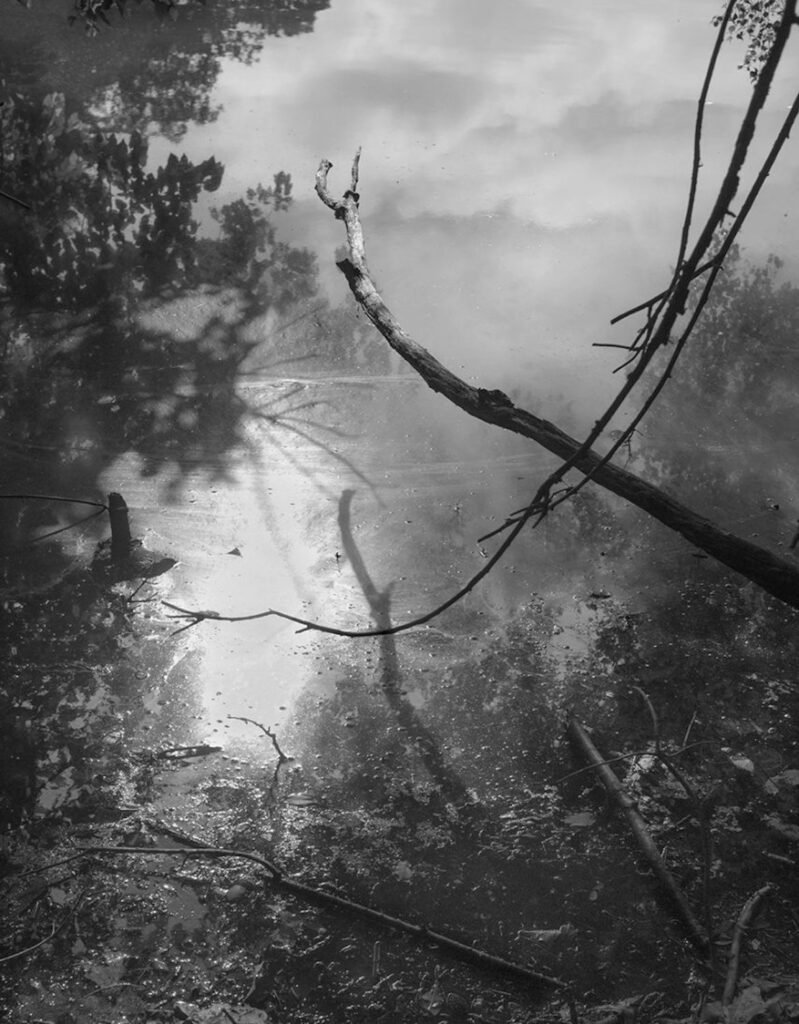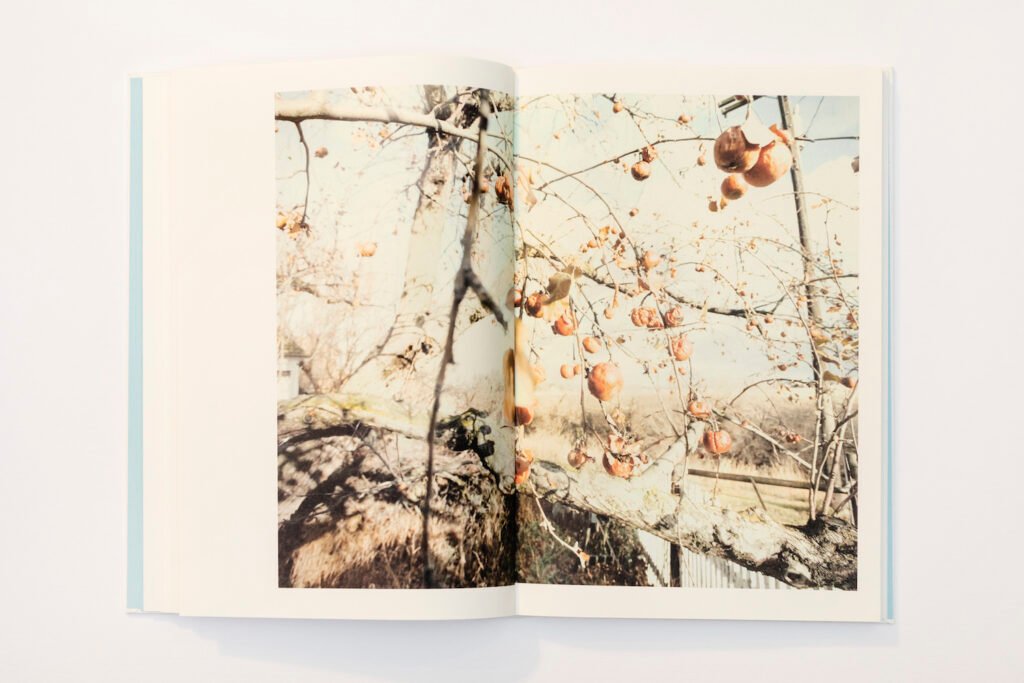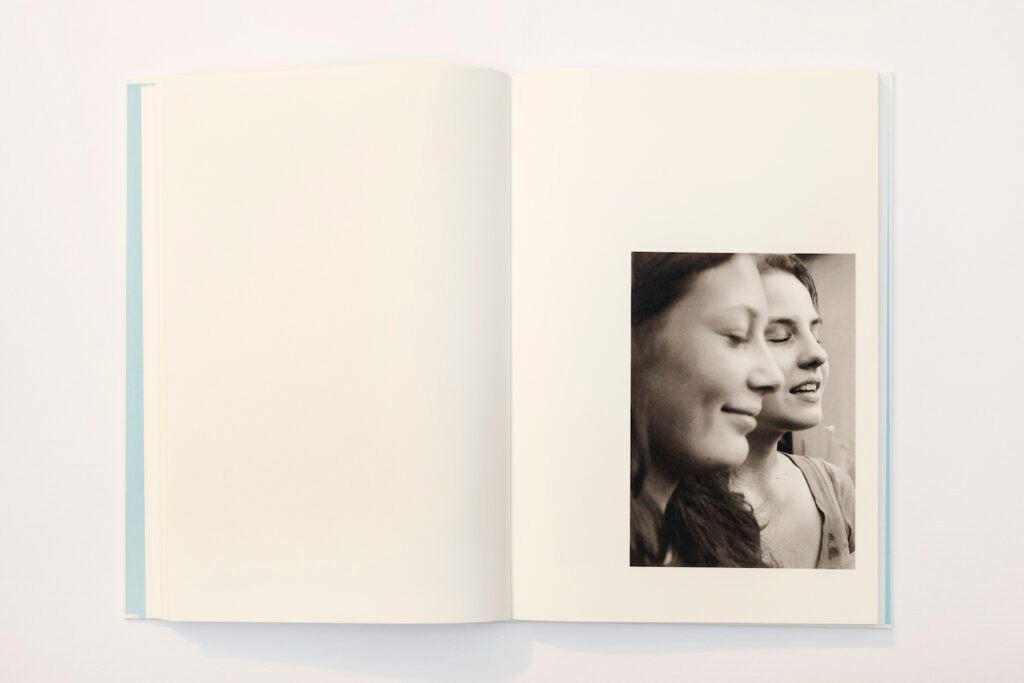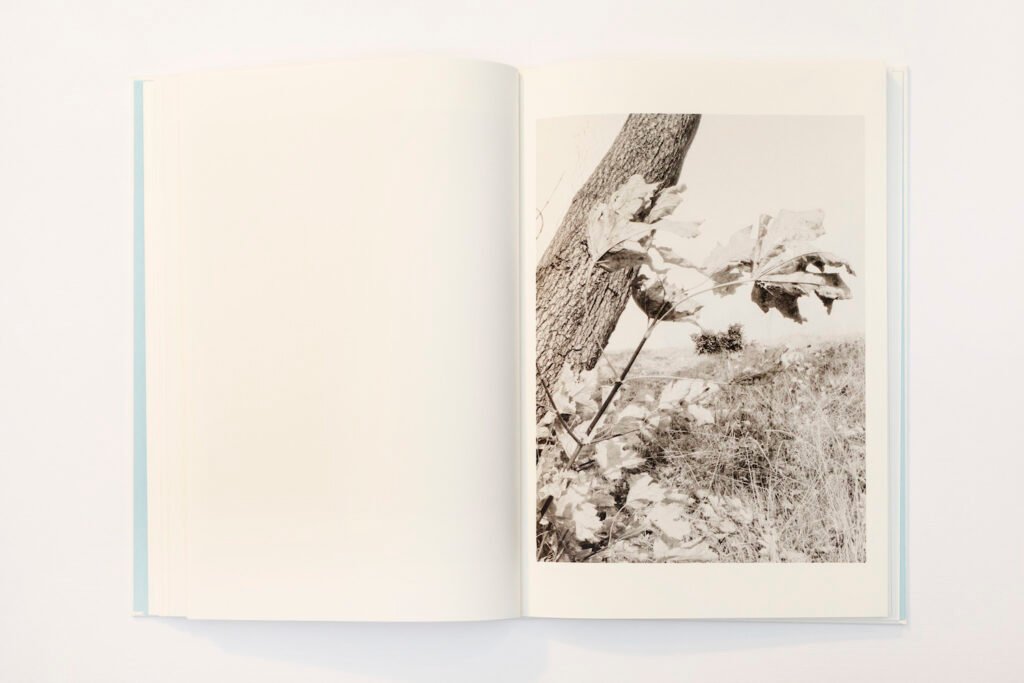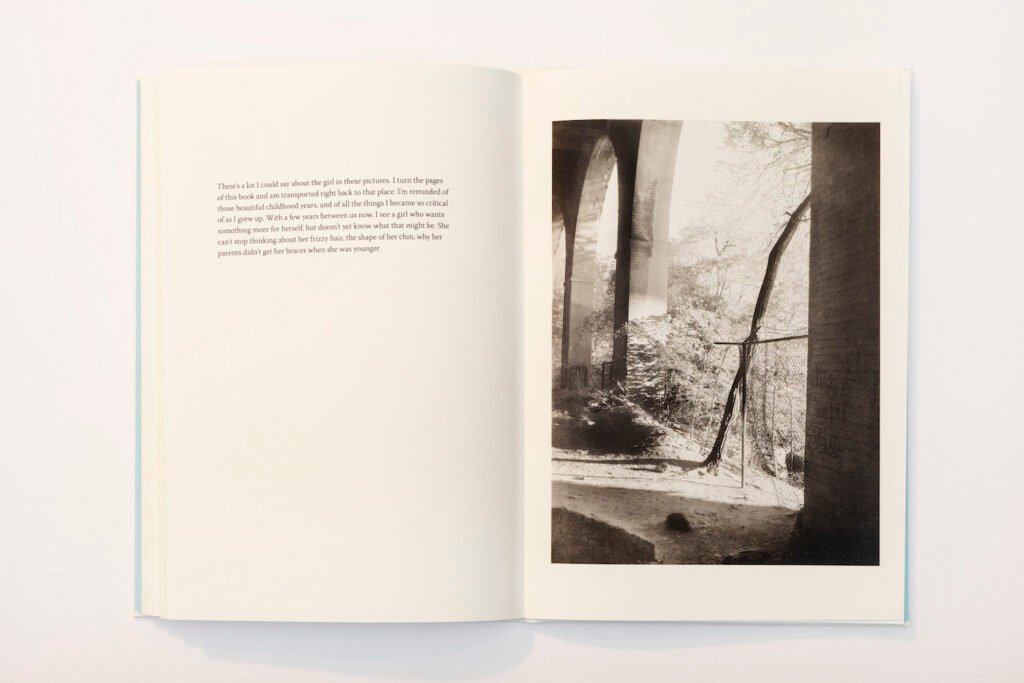Diving into the pages of Somersault feels like eavesdropping on a dialogue; a delicate, cautious interaction where every word is weighted and hard to get out. There is a daughter at the peak of that inevitable time of transition at the end of high school, going through a whirlwind of dizziness, wanderlust, apprehension, eagerness to grow, fear to leave home (and everything that it means) behind. And there is a father, observing his kid as she is slowly and awkwardly entering adulthood, preparing himself to let go and deal with her imminent departure. In Somersault, Raymond Meeks’ last photobook, his seventeen-year-old daughter Abbey appears alongside glimpses of domestic landscapes shot around their home during the days of that last summer before college.
“We live our lives in widening circles,” writes Meeks “As a father, I always felt it was important to instill a profound sense of place. […] I photograph close to home as memory loses structure, its architecture, trying to make light speak from the fixed edges of rooms long vanished.” Filtered by a misty and dreamy atmosphere, stilt houses hidden among majestic trees alternate with images of suspended bridges, river bends, railroads, tangles of dry bushes, bent tree branches—almost like extensions of their house environment or emotions. As life-long witnesses of the passage of time, they convey the longing, hidden sadness, and unsettling sense of waiting that both the father and daughter share. Magnolia trees and fields of wild daisies delicately remind us, and them, of the coming and permanent change.
“We walked, mostly silent, through wild dandelions that had gone to seed. I welcomed the stillness and the quiet. Nothing to do but walk, or sit, or look around,” remembers Abbey on Somersault’s last pages looking back at those distant moments, and herself living them; she sees a girl who is trying, lost, wandering, taking her time. “She’s not unlike those trees and grasses. Swaying, existing, growing slowly.” There would be so many things to share during these goodbye walks; concerns, expectations, longing. Now and then, after protracted silences spent just looking around and experiencing the surroundings, father or daughter try to say something to feel closer, to make it less scary. A tender attempt that not always succeeds. Their perspectives are now too far. Yet you can still feel that they have a common sensitivity, an invisible thread that links them and never breaks. All that remains unsaid hangs in the sky above, filling the air.
Raymond Meeks (Ohio, 1963) has been recognized for his books and pictures centered on memory and place, the way in which a landscape can shape an individual and, in the abstract, how a place possesses you in its absence. His books have been described as a field or vertical plane for examining interior co-existences, as life moves in circles and moments and events—often years apart—unravel and overlap, informing new meanings.
Raymond Meeks lives and works in the Hudson Valley (New York). His work is represented in private and public collections including the National Gallery of Art, Washington D.C., Bibliotheque Nationale, France, and the George Eastman House, with recent solo exhibitions at Casemore Kirkeby in San Francisco and Wouter van Leeuwen in Amsterdam. Raymond Meeks is the sixth laureate of Immersion, a French-American photography commission sponsored by Fondation d’entreprise Hermès. He will be mentored by David Campany, artistic director of the ICP, and will carry out his residency in France in 2022.
Raymond Meeks is a 2020 recipient of a Guggenheim Foundation Fellowship in Photography.
